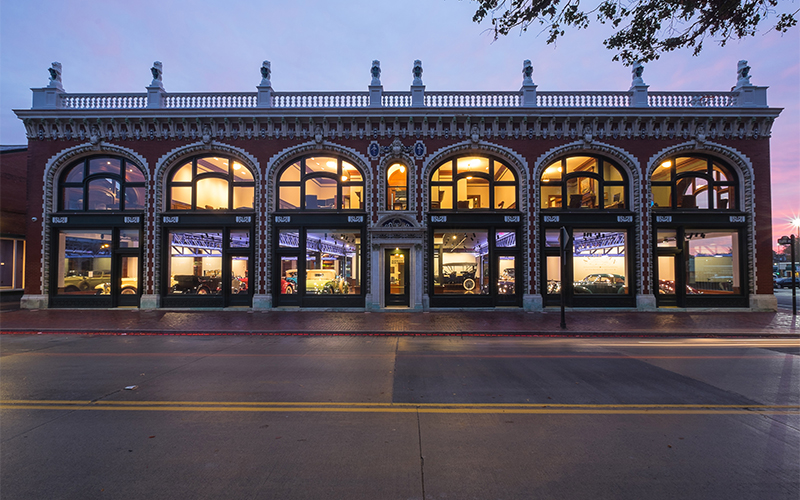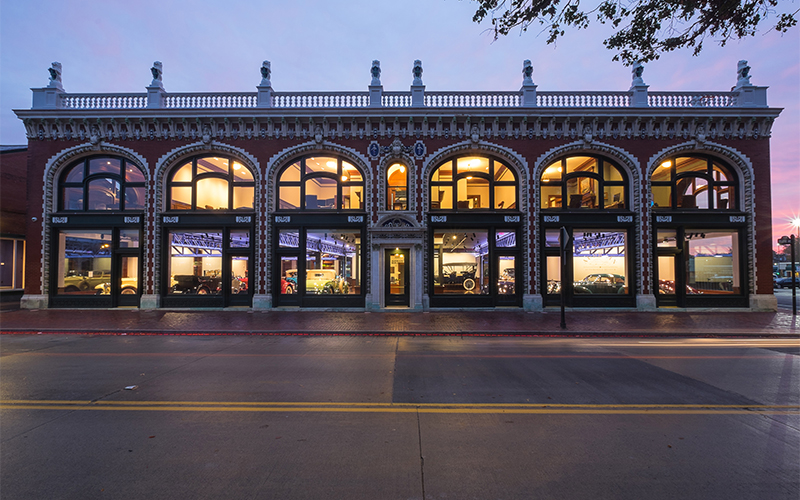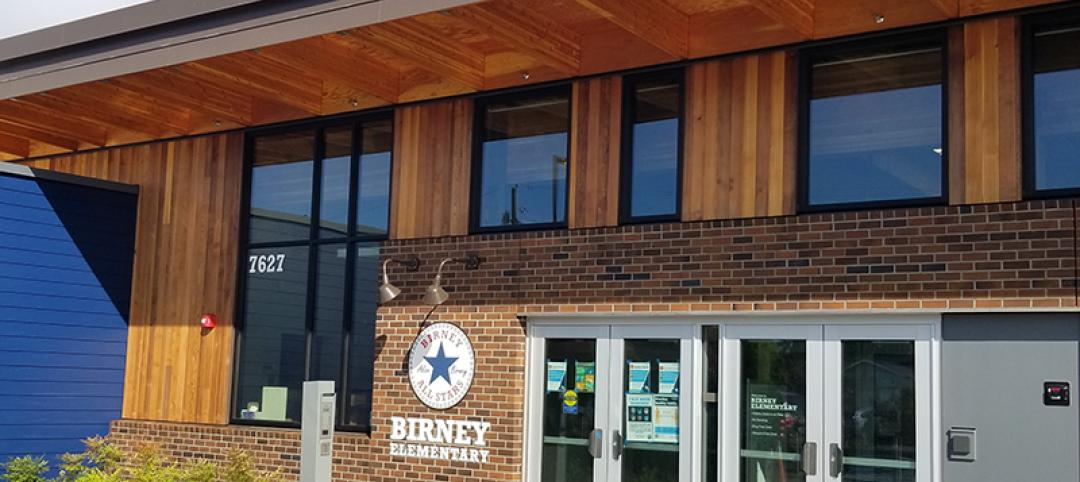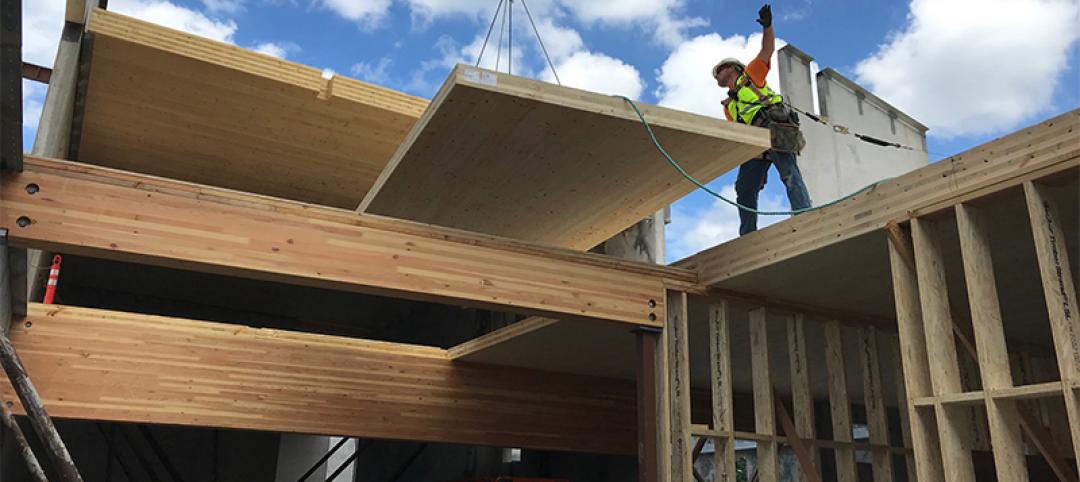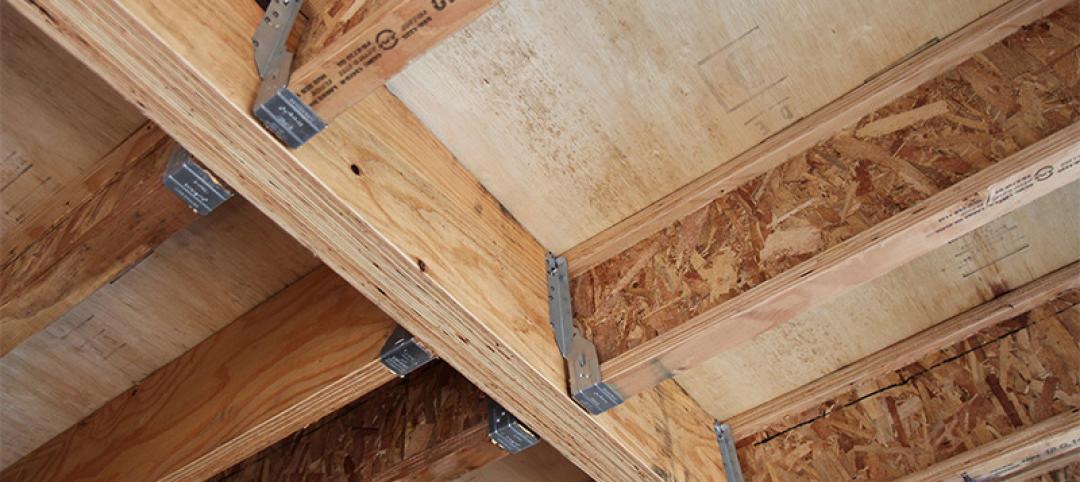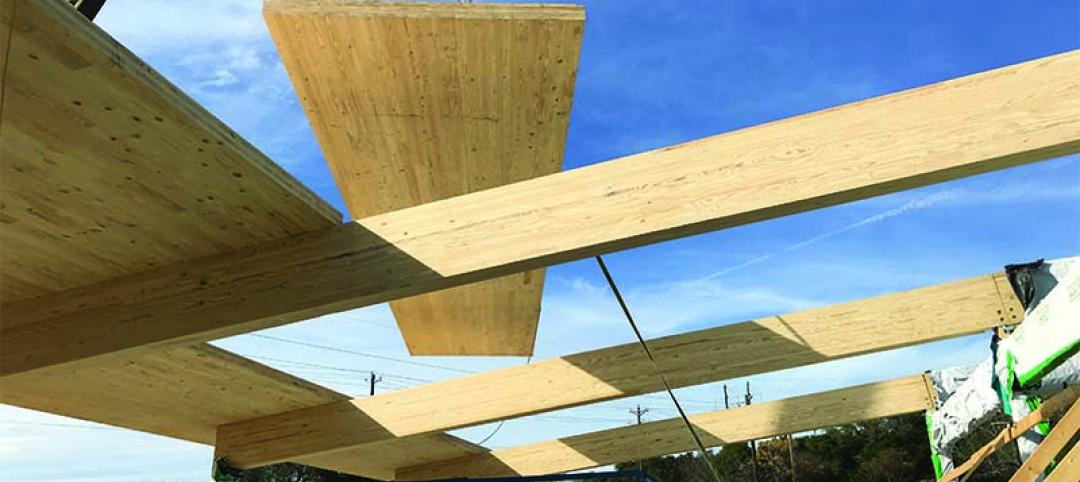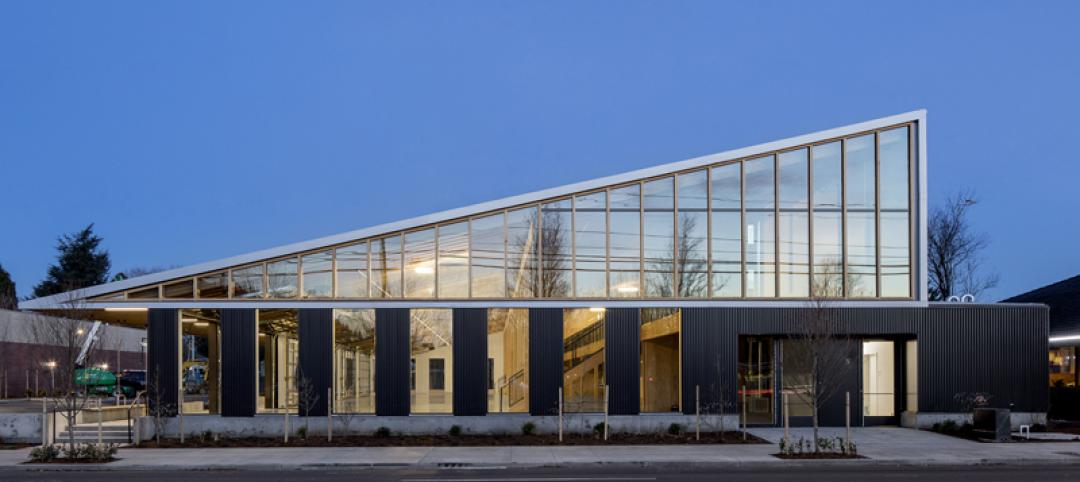Structural engineered wood products, manufactured in a wide variety of sizes and finishes, are well-suited for use in historical retrofits. Here's two examples of how designers took advantage of engineered wood's strengths: The Appleton Mills project, which needed to use historically suitable materials approved by the National Park Service, and the Audrain Museum, which required an extra-strong floor on which to display its heavy collection of antique automobiles.
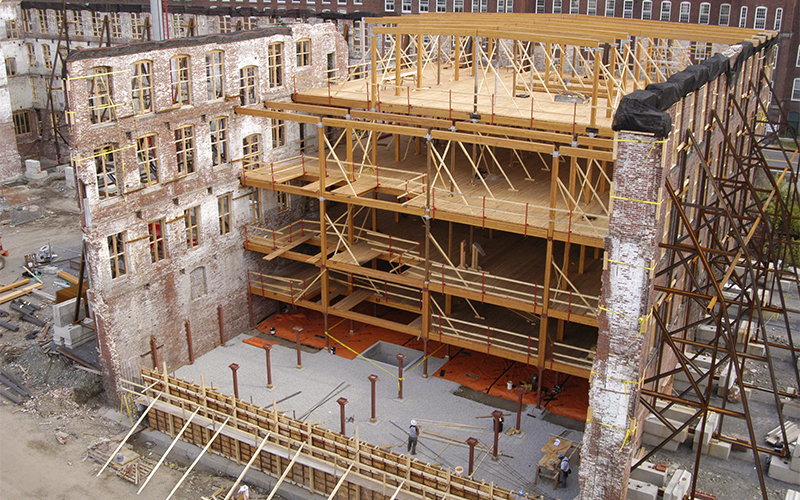
Appleton Mills, Lowell, Massachusetts
The Appleton Mills complex is located in a historically significant urban National Park. The original structure was built in the 1870s, with a second building added in 1906. At the time the remodel began, the buildings had been abandoned for about 20 years, and nearly 40% of the floors had collapsed. The original timbers, primarily 12- to 15-inch-thick southern yellow pine (SYP) spaced 9 feet on center with 3-inch thick SYP decking, couldn’t be saved. The structures had to be completely gutted, including the framing, down to just the existing 3-foot-thick brick walls.
To meet historical regulations, the project’s developers were required to replace the original timbers with wood. The design team turned to glulam, which the National Park Service determined was a suitable replacement for the heavy timbers that could no longer be found.
“The glulam planks were integral to building the structure on schedule and safely,” says Matt Bagedonow, vice president of CWC Builders. He notes that the glulam allowed the team to maintain temporary steel bracing for the existing walls and remove it as the new floors were added, incrementally increasing the lateral stability of the walls until they were fully braced by the new floors. In addition, installers used the glulam planks to create a platform to work as they built upward. Along with the floor system, the builders used glulam for all of the girders and floor beams, as well as to replace 8x8 heavy timber columns in the older building. According to Bagedonow, “Glulam was really key to getting this project done. It was indispensable.”
Audrain Museum, Newport, Rhode Island
The unique building with intricate exterior detailing was designed by New York architect Bruce Price in the early 1900s. Its transformation from a worn-around-the-edges modified office building into a car museum and upscale workspace required some heavy lifting from a new, more robust building frame.
The car museum houses a range of vintage autos, including a WWII-era vehicle weighing in at one-and-a-half tons. The original 2x12 flooring system needed to be removed and replaced to accommodate the additional weight. The developers kept the outer shell and the original brick bearing walls, which divide the basement into six sections. On the ground floor, the structure was framed with steel columns and 20-foot, 3-1/2-inch-by-9-1/2-inch glulam beams, spaced 12 inches on center, spanning each bay. The glulam not only accommodated the span requirements for the frame, but also was more readily available than some of the other framing alternatives the design team considered.
While the project sports a new structural wood frame, the team took great care to preserve as many of the original decorative elements as possible, including ornamental metal and millwork. The front façade features the original brick, intricate terracotta around the windows, and similarly ornate roof cornices.
For more information about these historical remodeling projects, visit https://www.apawood.org/retrofits-and-remodels.
More from Author
APA – The Engineered Wood Association | Nov 12, 2020
Engineered Wood Gets an Easy A
A Washington school district creatively leveraged the aesthetic and acoustic benefits of engineered wood products in their newly constructed school.
APA – The Engineered Wood Association | Oct 26, 2020
2019 Timber-Strong Design Build Competition
Six student teams competed at the National Council of Structural Engineers Association (NCSEA) Summit to design and build the most efficient and creative wood structure.
APA – The Engineered Wood Association | Oct 1, 2020
Exposing the beauty of engineered wood
A glimpse into the creative application of engineered wood products on one of the largest mass timber projects in the Pacific Northwest.
APA – The Engineered Wood Association | Aug 20, 2020
Back to basics: Framing big buildings right
A look into the most common wood construction framing errors, and how to avoid them, in today’s nonresidential construction industry.
APA – The Engineered Wood Association | Jul 14, 2020
Measuring the environmental performance of engineered wood products
“Green” is just a buzzword unless environmental impacts can be demonstrated scientifically.
APA – The Engineered Wood Association | Jun 12, 2020
Fire Phraseology FAQs: FRT versus Fire Rating
Fire resistant, fire retardant, fire rating: what’s the difference?
APA – The Engineered Wood Association | May 11, 2020
The basics of wood frame connection design
Good connection design makes use of wood’s natural characteristics and harnesses its strengths.
APA – The Engineered Wood Association | Mar 3, 2020
Mass timber has banks seeing green
First United Bank Invests in First Mass Timber Buildings in Texas, Oklahoma
APA – The Engineered Wood Association | Feb 14, 2020
Beauty and the Budget
Engineered Wood’s Appeal is More Than Skin Deep

